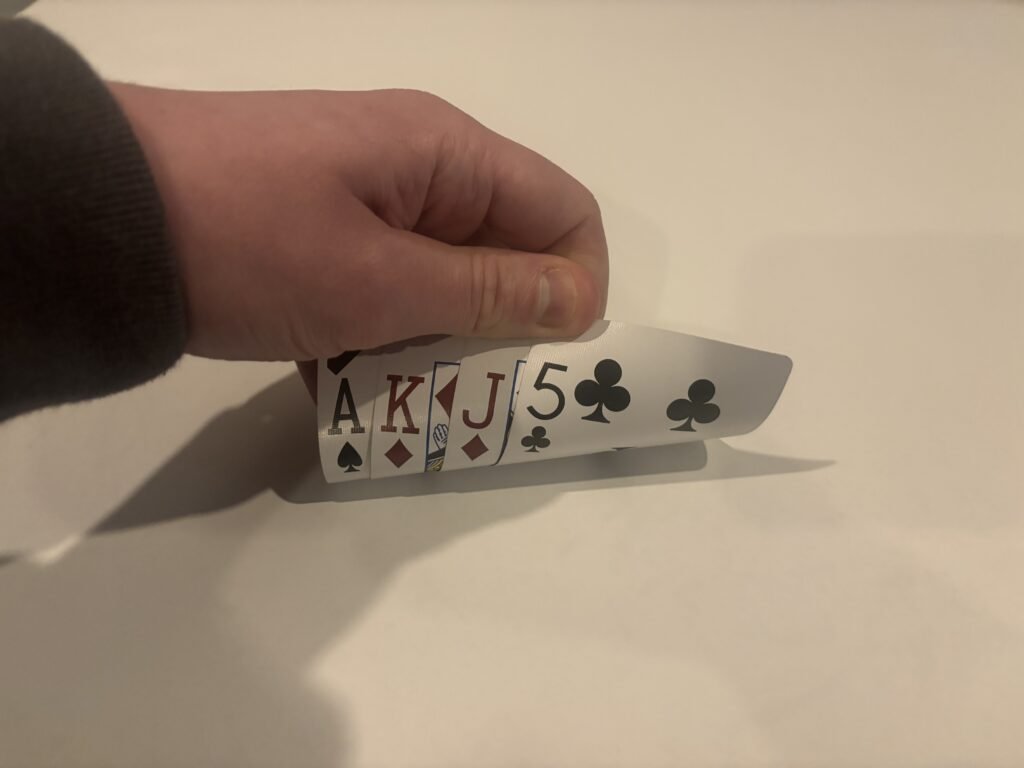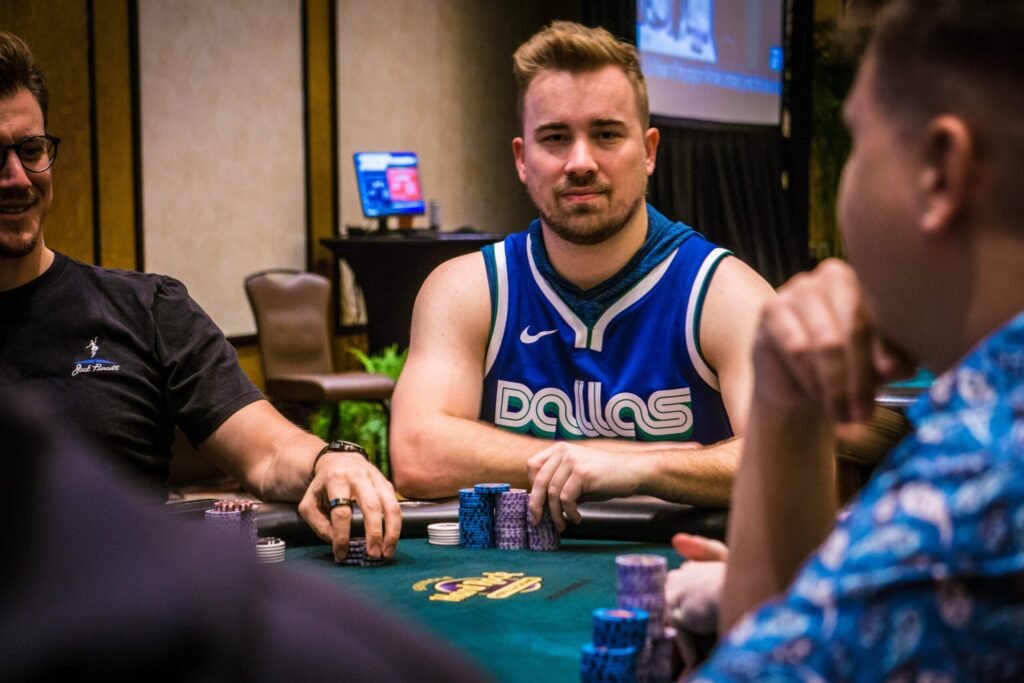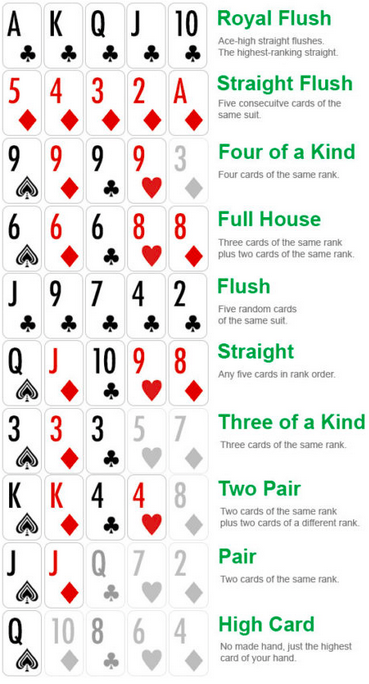While Texas Hold’em remains by far the most popular poker variation today, the great game of Pot Limit Omaha has certainly seen quite a rise in popularity over the last decade.
If you want to be a complete poker player these days, you should definitely know at least the most basic PLO rules and strategy so you can understand what’s going on when others play, even if you don’t join the games.
That said, PLO games tend to be juicier and more fun than Texas Hold’em, so there is a lot of incentive to learn Pot Limit Omaha rules and join the fastest-growing poker game in the world.
If you are looking to start at the very beginning, we offer a full guide to PLO rules from the moment the first card is dealt to the showdown.
Dealing and Betting Rounds in PLO
In many ways, PLO is a poker game similar to Texas Hold’em. If you are already familiar with basic poker rules, the dealing and betting rounds in PLO will be quite familiar, but we will go over them just the same.
If you are completely new to poker or have only ever played variants like Stud and Draw, then you will want to pay attention and learn this part too.
To start a hand of PLO, every player is dealt four cards face down. These are called hole cards, and they remain hidden from other players for the duration of the hand.
To get the action started, the two players seated to the left of the dealer button place a predetermined small blind and big blind, respectively. These blind bets are set in place to entice further action, much like in other forms of poker.
Once all the hole cards are dealt, players take turns acting on their cards in the first betting round, which is called “preflop.”
In this betting round, the player to the left of the big blind acts first, while the big blind acts last. In all other rounds, it is the player with the dealer button who acts last, while the player who posted the small blind goes first.
Once all the players act on their hand in the preflop betting round, the dealer deals out the first three community cards in the middle of the table, face up. These cards are there for everyone to use, and they are used in combination with the hole cards to create the best poker hand.
The first three community cards are called “the flop,” and they are followed by another betting round, with active players once again taking turns to act on their hands around the table.
Once all the flop actions are completed, the next community card, called “the turn,” is dealt on the table, followed by the third betting round.
Finally, a fifth community card, called “the river,” is dealt onto the table, with the last betting round following to end the action.
The ultimate goal of the game of PLO is to create the best possible poker hand using a combination of exactly three community cards and exactly two hole cards.
While Texas Hold’em players may be used to combining their hole cards and community cards in any fashion they choose, PLO rules dictate that you can only use two cards from your hand and three cards from the table to make your five-card hand.
But before we can get to the stage where hands are shown, we need to understand all the actions that can be taken in each of the betting rounds, so let’s elaborate on those.

One of the biggest differences between PLO and NLH is the amount of cards you are dealt.
Player Actions in Pot Limit Omaha
In the previous section, we explained that there are four betting rounds in the game of PLO and that players are given a chance to act on their hand in each of these betting rounds, also called streets.
But what are those actions, and how do they affect the play? Here is a quick overview of all the possible actions in PLO:
- Call: You match the value of the previous bet. Preflop, this will mean calling the value of the big blind if there is no other action in front of you. After the flop, you will be able to call any bet made by another player.
- Raise: Before or after the flop, you increase the size of the bet to your chosen value. Keep in mind that you can only raise up to the size of the pot in PLO, and no more.
- Bet: After the flop, if there is no action before you, you make the first bet for that betting round. You can only bet up to the size of the pot in PLO.
- Check: After the flop, you choose not to make the bet and simply relinquish the action to the next player at the table.
- Fold: You throw away your hole cards without having to pay any additional chips. Once you have folded, you will no longer participate in the hand in any way.
- All-In: If the pot is big enough, you may be able to bet all your chips on a given betting street. Once you are declared all-in, you won’t have further action until showdown, when you must turn your cards over at the instruction of the dealer.
It is worth noting that some of the actions are not available in the preflop betting round, with both bet and check only becoming available once the flop is dealt out, simply because the big blind already puts an active bet into play, making it impossible to either check or make the first bet for that betting round.
There is only one exception to that. This comes if no one raises before the flop but merely calls, known as limping, which gives the player sitting in the Big Blind the option to check and see the flop. Other than that, betting and checking are considered postflop actions.

PokerCoaching.com coach Adam Hendrix crushes PLO when not playing NLH.
Specific PLO Rules to Remember
Players transitioning into PLO from Texas Hold’em often have a hard time grasping a few elementary PLO rules that differ quite a bit.
So, here are the key Pot Limit Omaha rules you need to remember when playing the game for the first time if you already know how to play Texas Hold’em.
- Pot Limit Betting: All betting in PLO is limited to the size of the pot. Whether you are betting or raising, the size of the pot will determine the maximum you can put into the pot. If you don’t know the size of the pot, the dealer will help you.
- Four Hole Cards: It can be a bit scary to play PLO for the first time, as the hole cards just keep on coming. PLO is played with four hole cards instead of two, so try to get used to the notion.
- Only Two Hole Cards Play: At showdown, you are required to use exactly two hole cards and three community cards to make your hand. You cannot make a flush with one hole card or use three cards from your hand to form a full house.
That’s just about it! All other PLO rules resemble those of Texas Hold’em very closely and transitioning over will not be too hard once you get accustomed to these three rules.
However, while the rules of PLO and Texas Hold’em may be very similar, the strategy needed to win at PLO is quite a bit different, which is why we recommend making a slow transition and studying PLO extensively before playing for significant stakes.
PLO Hand Rankings
Pot Limit Omaha uses the standard poker hand rankings that are shared among games like Texas Hold’em, Seven Card Stud, and Five Card Draw.
Yet, if you are new to poker as a whole and don’t know the hand rankings just yet, here is a quick look at all the possible hand combinations from strongest to the weakest, along with a quick example of each:

Note that many of the card combinations listed here don’t include all five cards you need to make a full poker hand.
In case two or more players have the same hand combination (for example, one pair of Aces), the remaining cards are the ones that decide the winner, from highest to lowest.
Your highest remaining card is called “the kicker” and can be quite important in certain scenarios if both you and another player share the same hand strength at showdown.
PLO Hand Example
Now that we have gone over all the basic rules of PLO, it is time to take a look at a hand example that will put all the rules of Pot Limit Omaha into practice and demonstrate them for you.
If you are a visual learner, taking a look at an actual example, one street at a time, will help you understand the dynamics of the game, so let’s take a look.
Preflop
Playing in a $1/2 PLO game, with a stack of $500, you are dealt A♠K♥J♠T♥ in the cutoff.
All players fold to you, and you raise the pot. The dealer announces a raise of $7, as there are $3 in the pot from the blinds and $2 you must first call, making a total of $5 that you can raise on top of your $2.
You put $7 into the pot, and both the dealer and the big blind call your raise, making the total pot size $22.
Flop
The dealer puts out a flop of: Q♠9♠7♥
Big blind checks, and you look back at your cards. You will notice that you are holding A♠ and J♠, which could make you the nut flush on the turn, as well as K♥J♠T♥, which could give you a straight on the turn.
However, remember that in PLO, you must use three cards from the board to make your hand, which means you do not yet have a straight. In fact, you only have Ace-high right now, as your cards don’t fully match the ones on the board.
Yet, given all the potential cards that can turn your hand into a monster on the turn or river, you decide to make a pot-sized bet of $22, which is again called by both players, making the pot now $88.
Turn
The dealer puts out the 8♦, making the board: Q♠9♠7♥8♦
You now have a straight with your J♠T♥, which is currently the best possible hand. You also have a draw to the flush and a chance to make a higher straight on the river. So, when the BB checks to you, you decide to bet $50 for value.
The dealer folds his cards, but the big blind once again makes the call, making the pot $188 and taking us to the river.
River
The dealer puts out the 3♠, making the board:Q♠9♠7♥8♦3♠
You have now made a flush and further improved the strength of your hand. Your A♠J♠ means you have the best possible hand at the moment, so when the big blind checks, you bet $188 for a full pot.
Your opponent thinks for a while and then makes the reluctant call. When you flip over your hand, the dealer announces “nuts,” and your opponent shows you: K♠Q♥9♦6♠
The player flopped the top two pairs and made the second nut flush on the river. He had a very strong hand, but not quite strong enough in this scenario.
Pot Limit Omaha Rules Summary
If you are looking to play some PLO for the first time and you haven’t played any poker in the past, make sure to pay attention to all parts of this article and carefully examine poker hand rankings, betting streets, and our example hand.
If you are transitioning from Texas Hold’em, pay special attention to the three unique rules of PLO that make the biggest difference between the two games.
In either case, make sure to approach PLO very carefully and slowly, and don’t assume you know anything before you have played a bit and gotten fully acquainted with all the rules.
Even more importantly, don’t assume you are a great PLO player just because you are good at Texas Hold’em, as the strategy for the two games can be very different in many different situations.
Learn PLO one bit at a time and only up your stakes once you feel like you are actually getting the grasp of the complexities of Pot Limit Omaha, and have a poker bankroll as well.